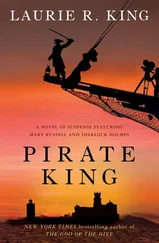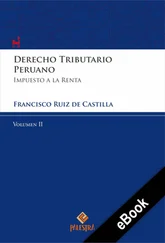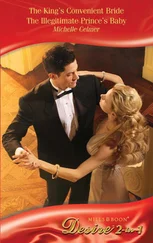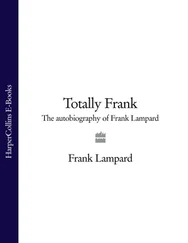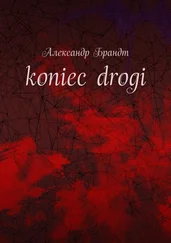Frank Portman - King Dork
Здесь есть возможность читать онлайн «Frank Portman - King Dork» весь текст электронной книги совершенно бесплатно (целиком полную версию без сокращений). В некоторых случаях можно слушать аудио, скачать через торрент в формате fb2 и присутствует краткое содержание. Жанр: Старинная литература, на английском языке. Описание произведения, (предисловие) а так же отзывы посетителей доступны на портале библиотеки ЛибКат.
- Название:King Dork
- Автор:
- Жанр:
- Год:неизвестен
- ISBN:нет данных
- Рейтинг книги:4 / 5. Голосов: 1
-
Избранное:Добавить в избранное
- Отзывы:
-
Ваша оценка:
- 80
- 1
- 2
- 3
- 4
- 5
King Dork: краткое содержание, описание и аннотация
Предлагаем к чтению аннотацию, описание, краткое содержание или предисловие (зависит от того, что написал сам автор книги «King Dork»). Если вы не нашли необходимую информацию о книге — напишите в комментариях, мы постараемся отыскать её.
King Dork — читать онлайн бесплатно полную книгу (весь текст) целиком
Ниже представлен текст книги, разбитый по страницам. Система сохранения места последней прочитанной страницы, позволяет с удобством читать онлайн бесплатно книгу «King Dork», без необходимости каждый раз заново искать на чём Вы остановились. Поставьте закладку, и сможете в любой момент перейти на страницу, на которой закончили чтение.
Интервал:
Закладка:
been from something else: it always smells kind of weird around here. The Magnavox was dead.
It’s a long way to the top if you want to rock and roll.
TH E STAR-S PANG LE D BAN N E R
S U B STITUTION C I P H E R
Now let me try to explain my thinking about the Tit’s weird code-parallelogram.
Sam Hellerman and I used to have this code hobby. It began in sixth grade, continued sporadically through junior high, and had even hung on slightly through some of ninth grade, though by that time we were mostly just going through the motions. It was time-consuming and tedious, and, more importantly, we didn’t have anything of interest to be all secretive about.
There were different methods, but one we had used pretty frequently was the Star-Spangled Banner Substitution Cipher.
What you did was, you chose two words at random from the
“Star-Spangled Banner” lyrics. The first letter of the first word would be your “in” character, and the last letter of the second word would be your “out” character. So say your words were
“dawn’s” and “stripes.” You’d write out the alphabet starting with “D” from “dawn’s,” adding the “A,” “B,” and “C” at the end; and underneath these letters, you’d write it out again, but this time beginning with “S,” the last letter of “stripes.” Like this: D E F G H I J K L M N O P Q R S T U V W X Y Z A B C
S T U V W X Y Z A B C D E F G H I J K L M N O P Q R
You substituted the letters in the second line for the first line’s letters in your original text. So in the SSBSC dawn’s/stripes 138
cipher, ZNGHITC QAPZTCTN XH RWPGPRITGXOTS
QN GTRTHHTH PCS HWTAITGTS WDAADLH would
mean “Kyrsten Blakeney is characterized by recesses and sheltered hollows.”
All the recipient would need to know to decipher the message was where the alphabet began on each of the two lines. The way we used to do it was by number. “Dawn’s” is the eighth word in the SSB, and “stripes” is the twenty-third word. So the key to the Kyrsten Blakeney message would be SSB-F8-L23. We used “The Star-Spangled Banner” because we both knew the first twenty-six words of the lyrics by heart. The “F” and “L” stood for first and last, because sometimes we would vary what letters we would use, so we could have L/F or F/F, or even midword letters that we would identify by Roman numerals: SSB-8iii-23iv. It could get pretty complicated.
Even though the letters of the coded portion of Tit’s note were arranged in a neat little parallelogram rather than in one line like normal text, I was pretty sure it was some sort of cipher.
It is possible to solve a substitution cipher by trial and error, even without a key, but Tit’s message wasn’t long enough to gauge the frequency of commonly occurring letters like “E” or
“T,” which is how you usually begin. Plus, if I was right, he had broken his ordinary coded sentences into fourteen-character clumps, so you couldn’t even guess at common words like
“the” or “of,” though some of the double letters might have provided a clue. There was only one way to decipher it, practically speaking, and that was to discover the key. If it had been based on something they had memorized, like “The Star-Spangled Banner,” there was no hope of recovering it. For reasons I’ll get to in a second, however, I didn’t think it had been memorized.
In any case, there would likely have been some indication for the recipient of how the key should be applied, along the lines 139
of the SSB-F8-L23 notation I mentioned. My assumption was that it would be somewhere on the note itself.
At first I thought it might be in the body of the message, which was uncoded, but cryptic, and which indeed made almost as little sense as the cipher. But then I looked at the date. There are only thirty days in June, so the date 6/31
doesn’t exist. The original date, 5/31, does exist, of course.
Why had Tit scribbled out the five and written a six over it, changing a real date to an imaginary one?
Here was my idea on that:
What if my dad had underlined the passage in Catcher, CEH 1960, not because of his deep interest in back rubs, but as a decoding key? It would explain why only one seemingly random passage had been underlined. And if so, there would probably be something on the note that would indicate how the substitution worked, and the date seemed likely. Of course, even if the back rub passage had been a decoding key, it wouldn’t necessarily have been the one that had been used for this particular message. That was a long shot. Nevertheless, with the Star-Spangled Banner Substitution Cipher in mind, I got out the Catcher and started counting words, just to see. I tried a few possibilities, using 5 or 6 and 31, but they yielded only more gibberish.
Then I noticed something: counting letters instead of words, the fifth letter of the passage was “T” and so was the thirty-first. That wouldn’t have been any use for a substitution cipher, since the in and out letters would all have been the same. What if Tit had written “5/31” and then changed the five to a six when he realized the 5/31 combination wouldn’t work as a key? Sixth letter from the beginning was
“H,” and the thirty-first was “T. . . .”
Damn. It still didn’t work, not in any of the configurations I tried. Yet it seemed too much of a coincidence that Tit 140
would have happened to cross out a date that would not have worked as a key and replace it with one that would, if he hadn’t been working from that particular passage. And it explained why there was only one underlined passage, and perhaps also why there were all sorts of other mysterious pairs of numbers scribbled all over the Catcher. It was the perfect theory in all but one respect: it didn’t work. What was I missing?
TH E G I FTE D AN D TH E TALE NTE D
Meanwhile, though it seemed a bit much with everything else that was going on, I continued to attend my inane, pointless classes.
In Humanities we were still doing The Turbulent Sixties, working on the Peace Collage. There was this big pasteboard
“wall” on which you were supposed to glue things cut out from magazines that had to do with the sixties, or peace, or civil rights, or the women’s movement, or, well, just about anything at all, really. There was a lot of potential mischief afoot with all that glue, but I managed to avoid getting glued to anything for once.
In part, I believe, this had to do with the Paul Krebs Brighton Rock incident. I had been worried about the consequences of the episode, but only a little. Technically, I suppose I had beaten him up, though that had been entirely due to luck and randomness. I still thought of it like he had attacked and persecuted me as usual, even though I “won.”
One of the reasons it had been possible to knock him down, and probably the main reason he had given up so easily and resigned himself to whimpering in his own blood, was that he had not expected me to fight back. I never did. I never had. He wasn’t on his guard because he had assumed there 141
was no reason to be. He had been shocked out of his normal aggressive mode, and his mind had stalled trying to process the unfamiliar information and finally locked. Plus, I had smashed his head into the gravel very hard and it had to hurt.
I guess it was the combination of shock and gravel. And loss of blood.
I had been as surprised by my reaction as he had, but I’m not going to say I don’t know what came over me. What had come over me was that in six solid years of being harassed, abused, beaten, ridiculed, humiliated, dehumanized, and tortured by Paul Krebs and his fun-loving buddies, they hadn’t ever attacked something I really cared about till they poured Coke on my dad’s Brighton Rock. There was no way Paul Krebs could have known, but he had picked the wrong fucking book to pour Coke on. I flipped out. I went berserk. I wasn’t in control of myself, and he wasn’t ready for an attack by a flipped-out, berserk King Dork inflamed by the rage that only grief and (devil-head) filial piety can summon.
Читать дальшеИнтервал:
Закладка:
Похожие книги на «King Dork»
Представляем Вашему вниманию похожие книги на «King Dork» списком для выбора. Мы отобрали схожую по названию и смыслу литературу в надежде предоставить читателям больше вариантов отыскать новые, интересные, ещё непрочитанные произведения.
Обсуждение, отзывы о книге «King Dork» и просто собственные мнения читателей. Оставьте ваши комментарии, напишите, что Вы думаете о произведении, его смысле или главных героях. Укажите что конкретно понравилось, а что нет, и почему Вы так считаете.

